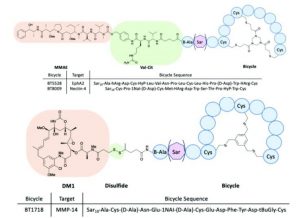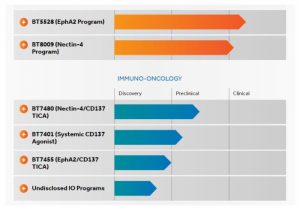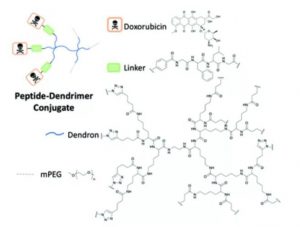Recently, Oncopeptides announced that the FDA has accelerated the approval of its research product Pepaxto (melphalan flufenamide, also known as melflufen) to be marketed in combination with dexamethasone for the treatment of adult patients with relapsed/refractory multiple myeloma (MM). According to the press release, Pepaxto is the first peptide drug conjugate (PDC) approved by the FDA. In this article, we will review some information about PDC products in research.
At present, two kinds of conjugates are widely used in PDC, showing good prospects as drug delivery systems: bicyclic peptide toxin conjugate (BTC) and peptide-dendrimer conjugate respectively. The length of the bicyclic peptide is usually between 9-20 amino acids, and there are 3 cysteine residues in the sequence; these cysteine residues react with the linker to make the position of the peptide relatively fixed. Bicyclic peptide molecules combine the characteristics of antibodies, small molecule drugs and peptides, and have similar affinity with antibodies and precise targeting specificity; at the same time, due to their small molecular weight, they can penetrate tissues quickly and deeply, so as to target the lesion from the inside of the tissue; the nature of its peptides provides “adjustable” pharmacokinetic half-life and renal clearance pathways, thereby avoiding the common liver and gastrointestinal toxicities in other drug forms. Attaching the drug to the bicyclic peptide molecule ensures that its conformation is not hindered.
The structure of the bicyclic peptide toxin conjugate developed by Bicycle
Currently Bicycle Therapeutics is developing a number of BTC products, of which BT1718, BT5528 and BT8009 are in clinical trials. The research product BT1718 is in the phase 1/2a clinical stage, and targets type 1 membrane matrix metalloproteinase (MMP-14), which is overexpressed in a variety of tumors (such as ovarian cancer, lung cancer, breast cancer, bladder cancer, etc.) . BT1718 is coupled to MD1 cytotoxin by a specific bicyclic peptide molecule through a cleavable disulfide bond. In phase 1 clinical trials, BT1718 demonstrated good safety, tolerability and efficacy.
The research product BT5528 targets Ephrin Type A receptor 2 (EphA2) and is in phase 1/2 clinical trials. EphA2 is overexpressed in a variety of tumors and is a member of the tyrosine kinase family. This receptor family plays an important role in many physiological processes, including cell migration, adhesion, proliferation and differentiation. BT5528 is connected to the MMAE payload by a bicyclic peptide molecule through an enzymatically cleavable Val-Cit linker. Another product under development, BT8009, targets Nectin-4, which is similar in structure to BT5528, is also connected to the MMAE payload through a Val-Cit cleavable linker.
Bicycle’s research pipeline (picture source: Bicycle’s official website)
Dendrimers are characterized by their highly branched structure, consisting of multiple layers, including a core, multiple intermediate layers, and outer shells. Different from linear peptides and polymers, dendrimers exhibit unique characteristics in terms of thermal properties, viscosity, and encapsulation. Peptide dendrimers can be divided into two categories: covalent peptide dendrimers and non-covalent peptide dendrimers. The payload is attached to the dendrimer through electrostatic or hydrophobic hydrogen bonds. Because of its adjustable amino acid characteristics and good biocompatibility, the use of peptide dendrimers is considered to have great potential. In one study, researchers used peptide dendrimers macromolecular drug conjugates to selectively deliver doxorubicin (DOX) to cancer sites, which can significantly reduce tumor size in a mouse model. In another study, researchers demonstrated that peptide dendrimers had the potential to treat colorectal cancer by controlling the drug delivery of gemcitabine (GEM).
The structure of the peptide-dendrimer conjugate for doxorubicin delivery
Melflufen, which has just been approved by Oncopeptides, is prepared by coupling an alkylating agent with a peptide targeting aminopeptidase. Melflufen can be quickly taken up by MM cells due to its lipophilicity. In the cells, it will be rapidly hydrolyzed by peptidase, thereby releasing the hydrophilic alkylating agent. Aminopeptidase is overexpressed in tumor cells, especially in advanced cancers or tumors with high mutation load. Because melflufen can increase the concentration of alkylating agent in cells, its killing effect on MM cells is better.
We hope that with the progress of technology, more PDC drugs will be available as soon as possible to benefit more patients.


